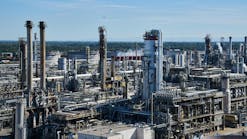By OGJ editors
HOUSTON, July 20 -- The Marcellus shale could become the leading supplier of natural gas in the US within a decade, according to an analysis released July 20 by two researchers from Penn State University and a former Penn State professor now with the University of Wyoming.
The study, commissioned by the Marcellus Shale Coalition (MSC), estimated that Marcellus shale production will average 3.5 bcfd of gas equivalent in 2011 compared with an average 1.3 bcfed in 2010. This includes dry gas and petroleum liquids.
Production at yearend 2010 from the Pennsylvania Marcellus was nearly 2 bcfd, the report said, noting producers are using advanced well stimulation techniques that increased well productivity.
The study, taken in tandem with projections released earlier this year by the US Department of Energy, said the Pennsylvania Marcellus shale has the potential to produce 17.5 bcfd by 2020, which would be about 25% of US gas.
“Just a few years ago, Pennsylvania relied heavily on other states for natural gas to fuel our economy. That dependence is no longer, though, as Pennsylvania is now a net natural gas exporting state,” said Kathryn Klaber, president and executive director of the MSC.
The study estimates that by 2020, Marcellus development could support 256,420 jobs and generate $20 billion in added value to Pennsylvania’s economy.
Timothy J. Considine, former Penn State professor and now a director of the Center for Energy Economics and Public Policy at the University of Wyoming, wrote the study along with Robert Watson and Seth Blumsack.
Watson is a Penn State petroleum engineer and Blumsack is a Penn State energy economist.

